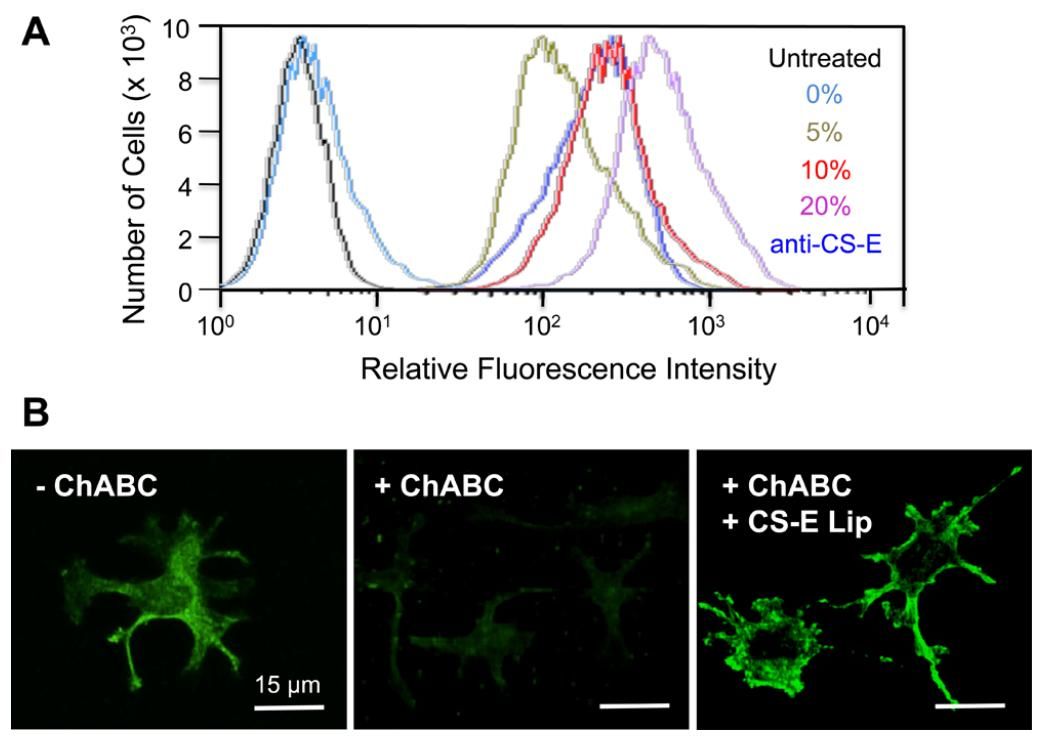


Glycosaminoglycans (GAGs) are a class of sulfated linear polysaccharides. Its sulfation pattern interacts with various proteins and is involved in processes such as cell growth and development, cancer metastasis, and neuronal growth. Based on De Novo Glycan Display, CD BioGlyco intervenes in normal physiological functions and pathways of disease onset by modulating its different sulfation patterns. We help our clients investigate the conformational relationships and in vivo effects of specific sulfated motifs by deciphering the complex structure and modifying the roles of cell surface GAG.
At CD BioGlyco, we synthesize a lipid and modify a specific glycan (e.g., chondroitin sulfate (CS)) on the cell surface. We provide a simple and efficient pathway to tailor membranes with bioactive glycans and study key cellular events by cell surface glycan engineering.
Our researchers use liposomes as glycan carriers for cell surface display of biomolecules. We use two main lipids such as 1,2-dioleoyl-3-trimethylpropanaminium chloride (DOTAP) and neutral 1,2-dioleoyl-sn-glycero-3-phosphatidylethanolamine (DOPE). Labeling of different cell types is achieved by lipid-functionalized fluorophores of DOPE-based liposomes. Then, we use oxime chemistry to add glycans. Key to this strategy is the need for free radical-mediated synthesis of polymers for lipid and glycan functionalization.
We optimize the membrane fusion ratio to ensure the best ratio. Meanwhile, we provide the relative level test service of cell surface fluorophore incorporation by fluorescence-assisted cell sorting (FACS). In addition, to characterize biophysical properties, we provide transmission electron microscopy (TEM), dynamic light scattering (DLS), and zeta potential measurement services.
We monitor the signaling pathways for liposome-mediated cell surface-specific and polysaccharide-modified cell activation. Liposomes pre-functionalized with polysaccharides are incubated and immunostaining with antibodies, then we image the process using confocal fluorescence microscopy. Moreover, we offer membrane lifetime monitoring of exogenous lipids.
 Fig.1 Strategies to remodel cell surfaces with glycans. (CD BioGlyco)
Fig.1 Strategies to remodel cell surfaces with glycans. (CD BioGlyco)
Journal: Journal of the American Chemical Society
Technology: FACS, Immuno-fluorescence assay, Western blot
Published: 2014
IF: 15.419
Results: The present study uses chemically modified lipids to achieve the display of specific CS glycosaminoglycans on the cell surface. It is shown that this precise CS modification at the cell surface finely regulates neuronal signaling and functional roles through surface density and specific glycan structure. The high degree of CS modification at the cell membrane interferes with the Akt signaling pathway and consistently affects neuronal growth.
 Fig.2 Controlled cell-surface display of CS polysaccharides and fluorophores. (Pulsipher, et al., 2014)
Fig.2 Controlled cell-surface display of CS polysaccharides and fluorophores. (Pulsipher, et al., 2014)
CD BioGlyco has efficient synthesis staff and experienced staff to help clients achieve their goals. We are committed to being your best partner in the de novo glycan display. If you are interested in our service, please feel free to contact us for a quote and more information.
Reference
